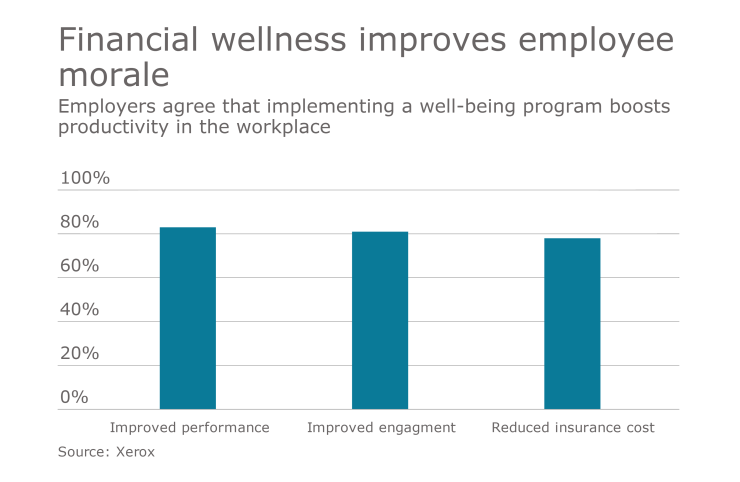Financial wellness assessments and digital tools could be crucial to easing the financial stress holding employees back from saving enough for their future and attaining other financial goals, said representatives from Prudential during their 2020 Workplace and Retirement Outlook.
“If employees are experiencing financial stress, they are more likely to be experiencing depression or are dissatisfied with their jobs; they miss more days from work and more hours during the workday and are more likely to take short-term disability for a longer period of time,” saidYanela Frias, president of Prudential Retirement.
More companies are investing in financial health resources as a benefit as financial stress affects more and more employees, according to Prudential. Three in 10 say that financial stress impacts their job performance and 40% of workers report having had health issues due to financial stress,
Prudential has been offering a financial wellness assessment tool to its clients since 2017 and companies have been incentivizing employees to use it — with one company offering $100 to workers who complete it.
“You take the assessment and it gives you a sense of how financially well you are and what tools to be focusing on and using,” Frias said. “While not every employer can afford that, they’re balancing all these things that they want to do for their employees, with the fact that there's a bottom line to deal with.”
Stress over finances causes many to delay other savings goals, specifically saving money for retirement, said Alicia Munnell, director at the Center for Retirement Research at Boston College. While companies have typically funded retirement benefits through 401(k) plans, savings are falling woefully short of the mark for millions of Americans.
“We have a big problem if half of working households can’t maintain life in retirement and half of people don’t have a plan,” Munnell said. “But it’s a big problem with lots of solutions.”
The average 401(k) balance reached $106,000 in 2019, up 2% from last year. However, 48% of employees 55 and older have nothing saved in a 401(k) plan, despite more than half of employers offering this benefit, according to the U.S. Government Accountability Office.
Frias said it’s critical that employers think beyond the 401(k) plan and look toward income solutions in retirement.
“We need to focus on retirement income. We have historically focused on accumulation because that's a real need and it continues to be a need, but we're getting to the point where we had the first generation of retirees that only have access to whatever their savings are in that 401(k),” she said.
It comes down to encouraging employees to change their attitudes and behaviors around savings, utilizing digital solutions to reach their goals, said George Phillip Waldeck, CEO of Prudential Workplace Solutions Group.
“We announced an acquisition called Assurance IQ, which is a digital platform that is a super low-cost way to engage many Americans who wouldn't otherwise be in the market for financial and insurance solutions,” Waldeck said. “Employers are hungry to make a bigger impact in a workplace that is struggling.”






